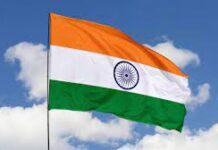Prime Minister Shehbaz Sharif was perhaps only human to crow about the latest inflation figures, with its rate coming down to 17.3 percent in April, the lowest point in two years, as well as the fourth consecutive month of decline, according to the Pakistan Bureau of Statistics. However, there are two caveats he should be aware of. First, 17.3 percent is still a very high rate, and can easily get out of control. Second, his attempt to credit the first PDM government for the decline, and to the caretakers for keeping the same policies in place, may be a little misplaced, considering that the performance of that government has already been found wanting by the electorate in the election in February.
However, the latest figures raise the question of what to do about the policy rate. The difference between the policy rate and the inflation rate is now 4.7 points, where theory postulates they should be equal. The economy is already in a stagflationary situation, and this difference will only worsen the situation. On the other hand, the negotiations for a new IMF loan are about to start, and the IMF so far has been insisting on a high policy rate. It may be some relief that the Finance Ministry prediction of a deceleration to 18.5-19.5 percent proved overpitched, because it means that predictions are conservative. The government needs to be all the more careful about the policy rate, because it is driving up its borrowing costs, and thus making nonsense of its budget provisions for interest payments, already the largest budget component.
However, all is not well on the economic front. The trade figures for March were dismal, with a sickly export performance leading to a deficit of $2.4 billion, 181 percent more than in 2023. However, another factor was the import of wheat allowed by the caretakers, which has not only cost the country $1.1 billion in payments, but has also caused a glut in the market, with the result that farmers have sold their crop, which is now being harvested, as much as 24 percent below the minimum purchase price set by the provincial governments. This is particularly bad news for the government’s avowed intention of escaping the debt trap. The huge foreign debt owed by Pakistan can only be paid if it racks up large and consistent trade surpluses. That may not be possible if the policy rate stays where it is.






















